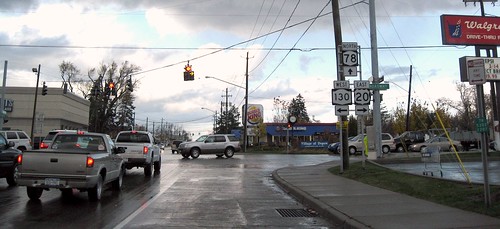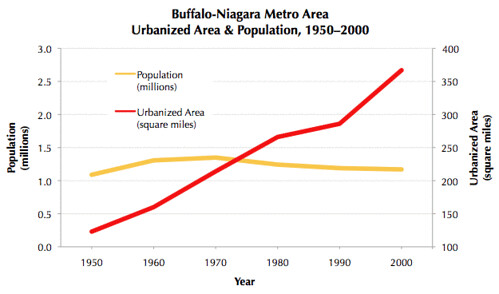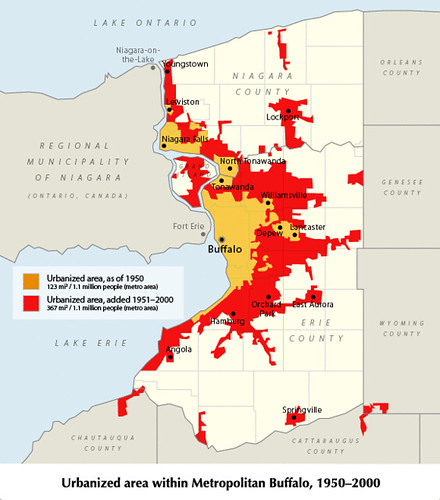You don't really need growth to generate sprawl

Posted May 25, 2010 at 1:36PM
One of the most fundamental observations about sprawling land use is that the late 20th century was marked by huge increases in developed land even in regions that had relatively small increases in population. In our 1999 book Once There Were Greenfields, for example, Matt Raimi, Don Chen and I displayed a chart showing that, from 1970 to 1990, metro Los Angeles grew six times faster in land than it did in polulation; metro New York, eight times faster; metro Seattle, over twice as fast. Metro Cleveland had grown even while losing population.
More extensive data on the subject were reported in EPA's thorough 2001 report, Our Built and Natural Environments. That report showed that metro Pittsburgh, whose statistics appear among those from other sprawling places, had grown in developed land at a rate an astounding 21 times that of its population growth from 1950 to 1970. Metro Buffalo had grown from 1982 to 1996 by over 50 percent in developed land even while growing not at all in population.
In a revealing essay posted on the blog Joe the Planner, Buffalo-based author Chuck Banas illustrates this vividly with two graphs. The first, above, shows that the Buffalo region's population remained fairly constant throughout the latter half of the 20th century (increasing a little between 1950 and 1970, decreasing a little from 1970 to 1980, and remaining generally level since), but that the region's physical footprint tripled in size during the same period.
The second, below, shows the physical footprint of the region as it was in 1950 (in amber) and how it has expanded since then (in red), despite no increase in population. Wow.
(Thanks to Aaron Renn, 'The Urbanophile,' for linking to Joe the Planner's observations.)
This is, or should be, at the heart of the current public discourse over the future of our so-called "shrinking cities," places whose economy and urbanity are said to have declined so much that we might as well go ahead and repurpose tracts of land in their centers to non-urban uses. It is my view that very few of these regions are really shrinking very much if at all, when you look at population changes. Instead, they have mainly hollowed out, expanding the suburban fringe while disinvesting the core.
This matters a lot when one thinks of what the policy responses should be. I believe that, if the solutions do not include stopping sprawl on the fringe, nothing done on the ground only in the central city will help. Indeed, if potentially revitalized land is converted to other uses, it may even aggrevate sprawl and worsen the problem, especially since there are national demographic and market changes under way that point to increasing demand for urban environments in the coming decades.
Move your cursor over the images for credit information.


